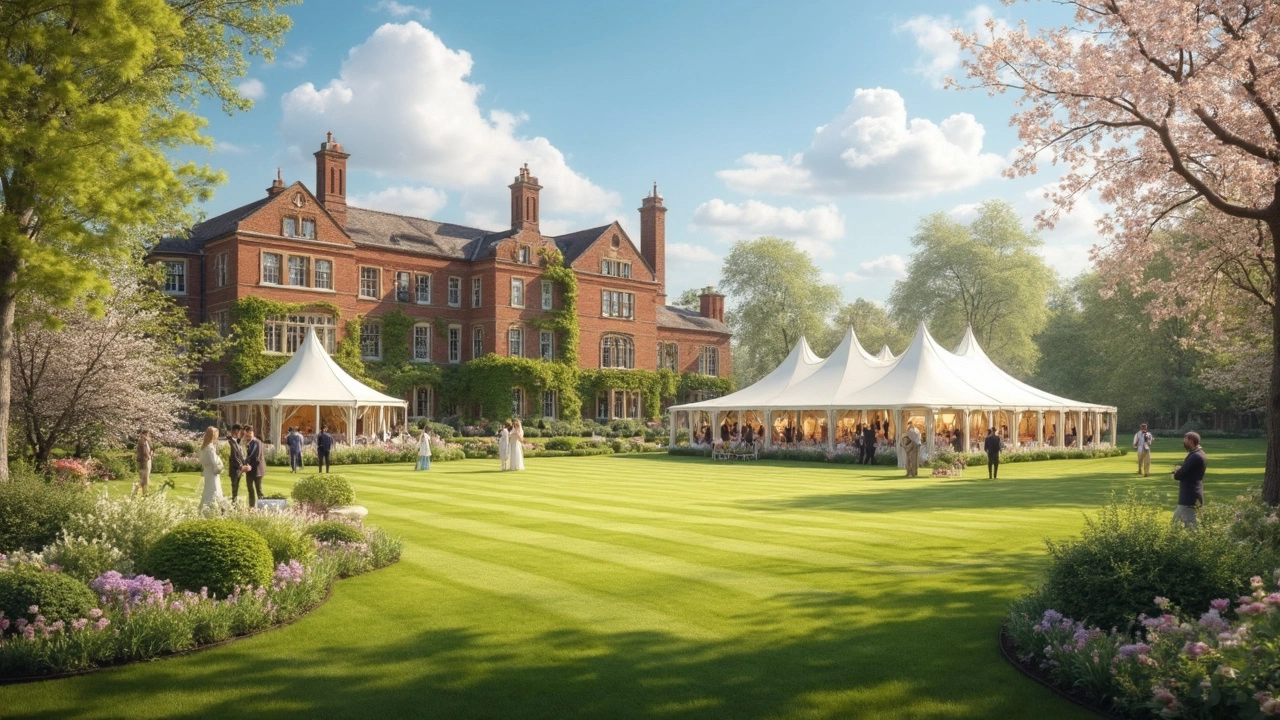Cost of Wedding: What You Need to Know Before You Say "I Do"
If you’ve started scrolling through bridal magazines, you’ve probably seen the headline "£30,000 wedding" and wondered if that’s realistic. The truth is, the cost of a wedding can swing wildly depending on venue, guest count, and personal taste. The good news? You can shape a beautiful day without breaking the bank, as long as you know where the money goes and where you can trim.
Breaking Down the Main Wedding Expenses
First, put a rough number on each major category. Most couples spend about 40% on the venue, 20% on food and drink, 15% on photography, 10% on attire, and the remaining 15% on décor, entertainment, and little extras. This doesn’t mean you must follow the exact split, but it gives a solid benchmark.
Venue. Whether it’s a historic manor or a community hall, the price tag includes the room, tables, chairs, and often basic lighting. Ask if the venue provides in‑house catering; that can cut costs compared to hiring an outside caterer.
Catering. Food and alcohol usually eat up the next biggest chunk. Buffets and family‑style service tend to be cheaper than plated dinners. If you’re open to a limited bar or a signature cocktail, you’ll save on booze without dulling the vibe.
Photography. You’ll want quality images, so don’t skimp too much here. Look for photographers who offer a set number of hours and a curated gallery rather than endless raw files. Sometimes a talented junior photographer can deliver stunning results at a lower rate.
Attire. The dress, suit, shoes, and alterations can add up fast. Consider sample sales, renting, or buying gently used gowns. Tailors often give discounts for off‑season weddings, so plan accordingly.
Decor & Extras. Flowers, tableware, lighting, and entertainment can be as lavish or as simple as you like. DIY bouquets, renting decor, or using seasonal flowers can shrink that line item dramatically.
Smart Ways to Cut Costs Without Compromise
Now that you know where the money flows, here are some practical tricks to keep the cost of wedding under control.
1. Trim the guest list. Every extra seat means extra food, extra invitations, extra décor. A tighter list instantly lowers several cost categories.
2. Pick an off‑peak date. Saturdays in summer are premium. Mid‑week or winter weddings often come with venue discounts and lower vendor rates.
3. Combine services. Some photographers also offer videography, or a florist may handle table décor. Bundling saves time and money.
4. DIY where you can. Assemble your own welcome boards, enlist friends for music playlists, or create simple centerpieces with candles and greenery. It adds a personal touch and cuts the price.
5. Set a clear budget and stick to it. Write down a hard limit for each category and track every expense. When a vendor’s quote exceeds the limit, negotiate or move to the next option.
Remember, the cost of wedding is not a fixed number – it’s a flexible plan you shape with choices. Start with a realistic total, break it down, and then use the tips above to keep each piece in check. By staying organized and focusing on what truly matters to you and your partner, you’ll create a day that feels luxurious without the guess‑work of hidden fees.
Ready to map out your own numbers? Grab a spreadsheet, list your top priorities, and watch the cost of wedding become a clear, manageable guide instead of a mystery.

- Jun, 27 2025
- Comments 0